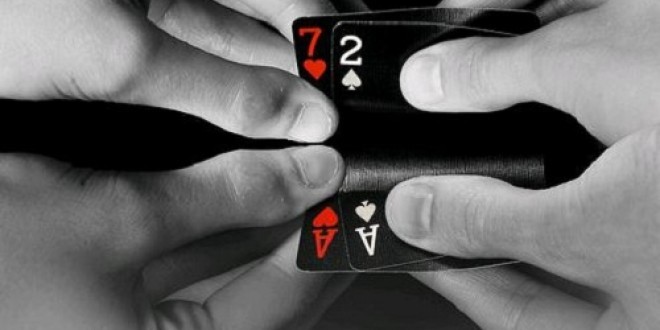One of the most known moves in Poker is the bluff. Each day new players flock to the game of Poker and can´t wait to execute their first bluff. Some players utilize the bluff very often, some not so much and some not at all. There are definitely times to bluff and times to play it straight. I thought I would go over some general thoughts on bluffing. While I am speaking mainly for the benefit of online Poker players, these thoughts will hold true in your home games and the Poker rooms around the world – except point number two. TheCasinoDB are reviewing online casinos on a daily basis and you will most likely find one with great bonuses for your next poker or slots game. Make sure to visit that site as you will most likely be able to pick the best casino and double your deposit.
New Players and Bluffing
It is important to try and figure out the playing level of your opponents. I once heard Annie Duke give a pretty good description of the ability levels of Poker players. Instead of sticking to the generic terms of Amateur and Pro, she talked about three levels. Through my own research, I have concluded that this breakdown is very accurate. I am going to break down the three levels, add my own bluffing commentary and call them Novice, Intermediate and Professional. These three levels have nothing to do with the amount of time spent playing Poker. It is quite possible for someone who has been playing Poker for ten years to still be at the novice level.
Novice: The novice player almost always plays the game based on what he or she holds. The player on this level will, most of the time, fail to read the board and realize that bigger hands possibly exist. Bluffing this player can be very difficult if you are basing your bluff on the board. Since this player does not piece together opponent´s possible hands, the board is simply there to complete this player´s hand. Normally to successfully bluff players on this level, you need a very substantial bet to scare them.
Intermediate: The intermediate player has begun to piece the game of Poker together and will, for the most part, recognize what other hands are out there. The player on this level is still playing the cards and won’t always recognize when other players are showing weakness or strength. It is very possible to bluff players at this level if your bluff is based on the board, because they have the ability to put you on a hand.
Professional: The professional player has reached the pinnacle of Poker playing. Many players go in and out of this state, but few live here. The professional player is no longer simply playing cards; rather he or she is playing the players. Bluffing the professional player, while certainly possible, can be a difficult task to accomplish. Typically, one will have to make multiple attempts to shake off a professional player.
Call Clickers
The evolution of Internet Poker has spawned what I like to call “Call Clickers”. It is so easy to simply click a button to call in Internet Poker that everyone is doing it. By doing so, you get to see more cards. Because of the ease, it can be actually tougher to bluff in online Poker – especially at low-level games. If you are playing low-level limit games, it can be extremely tough to practically impossible to bluff successful. It’s very hard to shake someone off a pot when the amount to call is very small and clicking the call button instead is very convenient.
For these reasons, you are well advised to play it straight at the lower levels. Should you find yourself in a low-level no limit game, that’s much easier to bluff and get away with it, because of the ability to push out a monster-sized bet. However, the really low-level games are filled with players on the novice level and if they have anything at all, you might find yourself being called and getting up from the table.
Know Thy Players
I can´t stress this point enough. You must find out all you can about each player at your table. While there´s no button that says Novice, Intermediate or Professional for each player, it is possible to formulate an idea by studying his or her playing habits. Did the player go all-in with a pair of Jacks while there was four spades on the board and a re-raising player? If so, there´s a good chance that he or she is a novice.
By studying your players, you will learn how to react to their betting habits. For example, I was playing at a table the other night and decided to limp in, on the button, with Jack-Nine suited. The small blind threw out a 4x raise and I ended up folding. When the hand was over, the player showed his cards and an Ace-Six suited was shown. Not necessarily a hand you want to go in with a big raise on. Some ten hands later, I decided to limp in with a pair of threes. This same player comes out with a 4x raise and I quickly called. I made a set on the flop and took more chips off of him. Again, he raised with a mediocre hand. By studying the player, I realized he had high card envy. Anytime he had a face or ace, he was coming in.
Fifth Street
In my next article, I am going to talk about situations where I start thinking about stealing a pot and reveal a couple recent hands where that happened. Knowing when to bluff is very important. If you go overboard with bluffing or bluff in wrong situations, you will find yourself getting up from the Poker table with nothing to show for your time.
